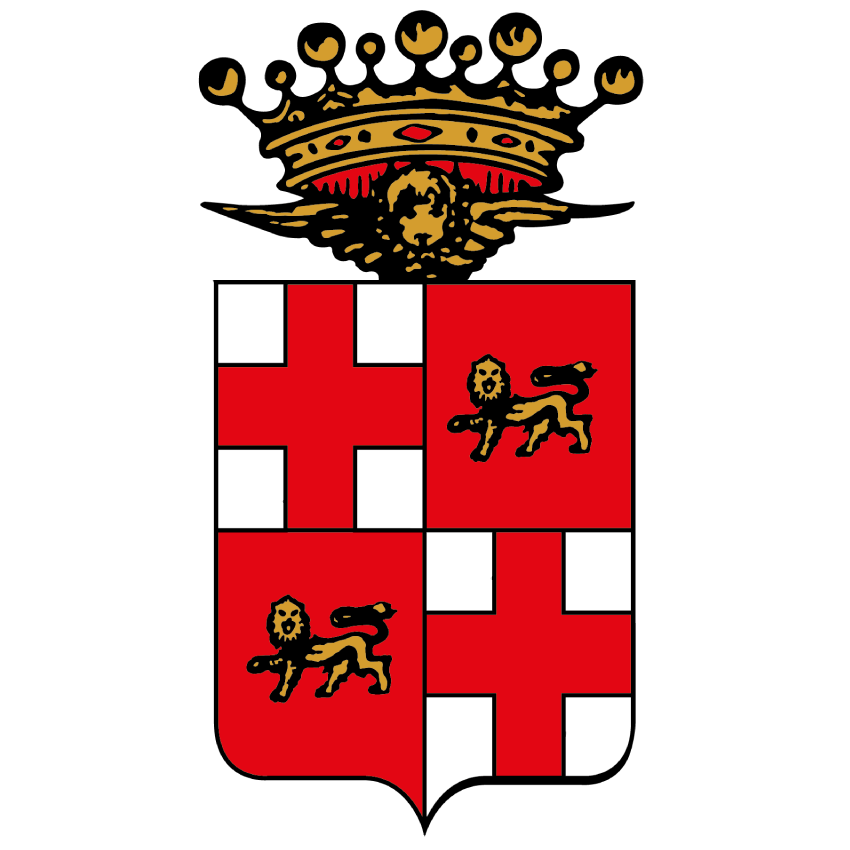Tradition has it that Saint Dominic, in person, founded the Dominican Convent in Chieri, when he visited the city in 1220. The Saint was supposed to have blessed the well in the convent, since when its water acquired miraculous healing properties. In fact, the Dominicans arrived in Chieri around the middle of the 1200s, possibly a nucleus that separated from the convent in Asti. It was quite common practice at the time (known as the Hallelujah Period, because of its religious fervour) for a religious community that reached a certain size to split and form a new convent. In 1267, for example, Brother Umberto Benzi left Chieri to establish a convent in Savigliano.
The first settlement was situated in the shelter of the first walled circle. It is possible that the clergymen were appointed to officiate in the Church of Santa Maria’s Gate, which the arches that came to light in 1651 were part of, when the convent was renovated. This theory has not been confirmed, but it seems likely to be accurate.
The date of construction of the present church is unknown, but it was started around 1326, even though it was not consecrated until 1388. In accordance with the standard regulations for Mendicant Orders it was planned as a Latin cross, with three naves. It wasn’t until the XVth century that the adjacent side chapels were incorporated, making use of the space between the buttresses supporting the walls. The belfry, the tallest in the city at 52 metres, was started at the same time as the church and definitely finished by 1381, the year in which the city council donated the money to buy the bells.
During its long history the church was subjected to numerous transformations; first in the 1400s, with the construction of the side chapels, then between 1486 and 1660 with the construction of the vaults. In 1802, when the religious Orders were suppressed under a decree of the French Revolution, the convent was converted into a hospice for elderly believers of all congregations. During the Restoration period, it was the first Dominican convent to reopen in Piedmont, but in 1855 the clergy was again obliged to move out, this time because of the suppression of the Orders imposed by Victor Emmanuel II. The building was put up for auction, bought by the city council and subsequently used as a civic boarding school, military barracks and as a reformatory. The clergy returned permanently in 1871.
The church measures 55×18 metres and is entered through a majestic doorway framed by a cornice in terracotta. Starting from the nave on the right hand side, the first chapel is called the Crucifix, taking its name from the splendid Crucifix, attributed to Martino da Casale, which is now located in the Chapter house. Next there is the chapel of the Madonna of Lourdes (originally just a corridor passing into the “courtyard of the dead” inside the convent) and the chapel of Saint Dominic, which is dominated by the painting on canvas by Morgari, depicting the Dream of Saint Dominic.
The next chapel, that of the Holy Rosary, is one of the most opulent of the church. Given the name of the Virgin of the Victories, after the defeat of the Turkish fleet at Lepanto (1571), it is decorated by the excellent canvas painting of Moncalvo (recently restored), which depicts the Madonna with Child placing the crowns of the Rosary on the heads of Saint Dominic and Saint Catherine. Fifteen Marian “Mysteries” surround it. The last chapel before the Presbytery is dedicated to Saint Peter the Martyr, of whom a curious, splendid wooden statue (with the head of the Saint pierced by the blades of heretics) is kept in the convent. The main altar has two side chapels, the one on the right named after Saint Vincent Ferrer, who spent a long time in Piedmont and possibly also in Chieri. While to its left, there is the chapel dedicated to Saint Thomas Aquinas, with its altarpiece painted by Lorenzone and an alcove where the relic of the girdle of St Thomas is kept. The side chapel on the right gives access to the sacristy, which was originally the tomb of the Villa family. It is furnished with wardrobes and benches in walnut from the 1700s and there is a painting of Saint Mary Magdalene.
The apse behind the main altar was decorated by Moncalvo, who worked on it from 1605 until 1615. The four ribs of the choir vault are dedicated to the Evangelists, while the lunettes below them represent two episodes in the life of Saint Dominic: The Sermon and The Resurrection of a Maiden. At the base corresponding to these there are two enormous paintings of the Multiplication of the Loaves and the Resurrection of Lazarus. The roof of the apse, framed by valuable stuccoes from the 1600s, has five medallions containing portraits of the most important saints of the Order: from the left, Saint Raymond of Penyafort, Saint Thomas Aquinas, Saint Dominic, Saint Peter the Martyr and Saint Vincent Ferrer. The lower squares though, the work of a different hand and later, represent, from the left: Saint Agnes of Montepulciano, Saint Hyacinth, Saint Pius V, Saint Anthony of Florence and Saint Catherine de Ricci. Between the windows there are two statues in stucco of Saint Mary Magdalene and Saint Cecilia.
Passing along the left hand nave, starting from the belfry, the first chapel you come to is that of Saint Rose of Lima, the first Saint from Latin America. To complete this, in 1668, it was necessary to close the 15th century chapel of Saint Martha at the foot of the belfry, where 15th century frescoes are kept, which are some of the oldest in Chieri.
The next chapel is named after Saint Catherine of Siena and includes a recess where a valuable 18th century statue of the Madonna of the Rosary is kept. Then there is the chapel dedicated to Saint Hyacinth, a major apostle from Poland. The canvas here was painted in 1607 by Levoyer, who also painted the Annunciation on the left hand wall. The last chapel before leaving the church is named after the Bishop of Florence, Saint Anthony. The magnificent altarpiece is a copy of the Madonna of the Rosary by Guercino, which is kept in the church of Saint Dominic in Turin. Immediately opposite, on the first pillar on the left on entering the church, there is a 14th century fresco of the Madonna of the Milk.
The mothers of Chieri are quite fond of the image of the Virgin breastfeeding the Baby and it is associated with a miraculous event. The story goes that a heretic, out of spite, struck the image through the neck with a blade and blood spurted from the wound.
The walking tour finishes by returning into via Vittorio Emanuele II in the direction out of the city. At the junction with Via Roma, immediately outside of the first circle of the mediaeval walls the Gothic façade of St. Leonard’s Preceptory (a religious community presided over by a preceptor) can be seen.


